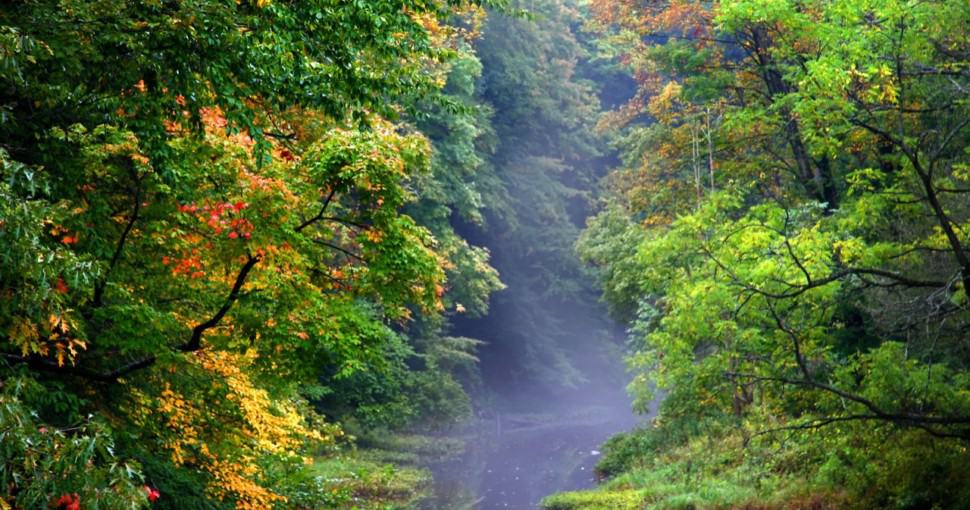Ohio is one of the most beautiful states in the United States, thanks to the millions of native trees that add to its beauty. Several types of trees grow well in the state, and many homeowners prefer having them in their backyards. This article will discuss the 27 most common trees in Ohio that add beauty to its naturally gorgeous landscape.
Contents
- 1. Arborvitae (thuja occidentalis)
- 2. Eastern Red Cedar (juniperus virginiana)
- 3. Bald Cypress (taxodium distichum)
- 4. Loblolly Pine (pinus taeda)
- 5. Norway Spruce (picea abies)
- 6. Chestnut Oak (quercus prinus)
- 7. Pawpaw (asimina triloba)
- 8. Quaking Aspen (populus tremuloides)
- 9. Sugar Maple (acer saccharum)
- 10. American Sycamore (platanus occidentalis)
- 11. Northern Red Oak (quercus rubra)
- 12. Cucumber Magnolia (magnolia acuminata)
- 13. Common Hackberry (celtis occidentalis)
- 14. Northern Catalpa (catalpa speciosa)
- 15. Green Ash (fraxinus pennsylvanica)
- 16. Atlantic White Cedar (chamaecyparis thyoides)
- 17. Common Persimmon (diospyros virginiana)
- 18. September Elm (ulmus serotina)
- 19. Downy Hawthorn (crataegus mollis)
- 20. Shining Willow (salix lucida)
- 21. Birch (betula)
- 22. Hazel Alder (alnus serrulata)
- 23. Alder (alnus)
- 24. Walnut Tree (juglans)
- 25. Ohio Buckeye (aesculus glabra)
- 26. Crabapple Trees (malus)
- 27. Eastern Redbud (cercis canadensis)
Ohio is home to a variety of environments. From lush wetlands to the Appalachian Mountains, the state is home to several natural wonders of Midwestern America. These wonders are marked by wide varieties of trees that thrive during rains, bone-chilling winters, mild southern temperatures, and hot and humid summers.
Like in all other states, some specific tree varieties are more common in Ohio. These varieties are marked by colorful fall leaves, bright spring flowers, sweet fruits, and breathtaking canopies that make Ohio’s landscape worth looking at.
Also check out the best flowering trees for Ohio organized by color.
Ohio is home to both deciduous and coniferous trees. Not only will you find a variety of tall, native trees across the state, but you will also come across shrubs, climbers, and creepers while exploring neighborhoods and woodlands.
For the rest of this article, we will be focusing our discussion on the most commonly seen tree species around Ohio. These trees are most commonly found in forests, farms, near mountains, water bodies, and in neighborhoods alike. Some of these are native, while others are non-native, planted species. By the end of this piece, you will have all the information you need to start planting trees in your own backyard in Ohio.
1. Arborvitae (thuja occidentalis)
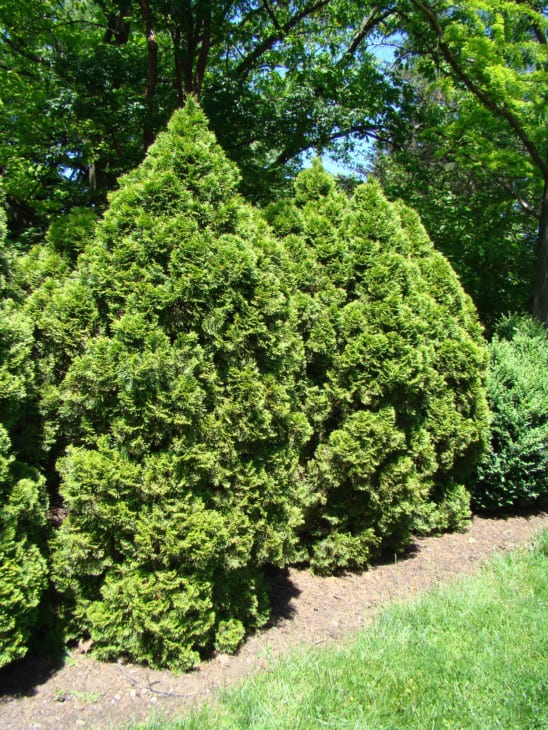
Arborvitae trees are tall, native, evergreen, and hardworking trees and shrubs. Most of them are thick, dense, and easy-growing. They add a lot of greenery to the environment and are hardy, pest-resistant, and disease-resistant. Their narrow, pyramidal shape makes them a natural choice for windbreaks. Arborvitae trees require almost no care. They make great accents for doors and main gates.
2. Eastern Red Cedar (juniperus virginiana)
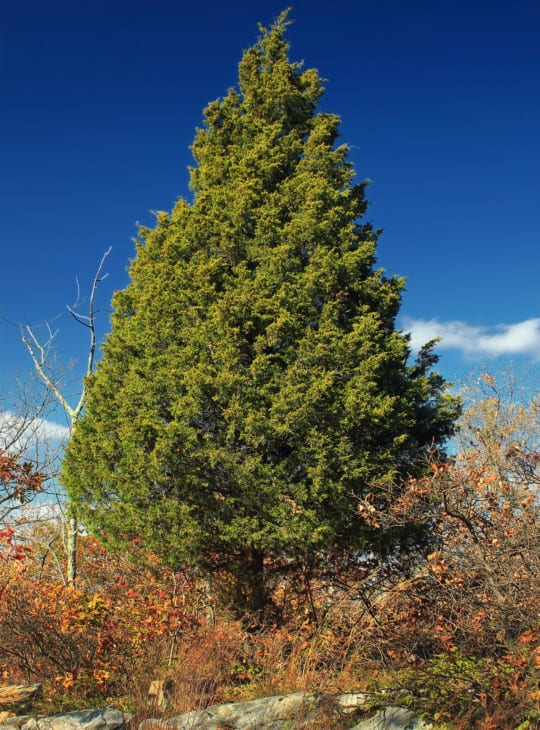
The Eastern Red Cedar is a famous but ancient evergreen tree species native to eastern North America. You can find this species from southeastern Canada to the Gulf of Mexico. It is the most widely distributed eastern conifer in the States and can also be located in North Carolina and Virginia. It can grow 30 to 40 feet tall and has closely oppressed, scaly, glandular leaves.
3. Bald Cypress (taxodium distichum)
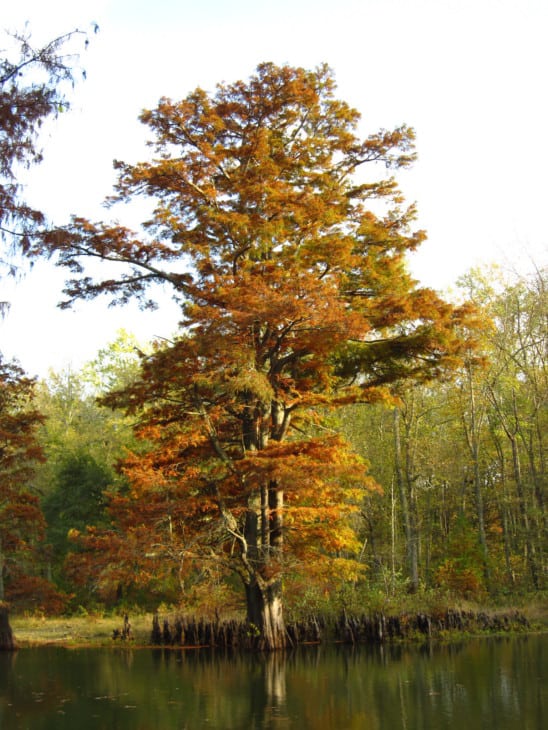
The Bald Cypress is a deciduous, coniferous tree belonging to the southeastern United States. It is tough and strong and adapts to a wide range of soil types, including salty, wet, dry, and swampy soils. It can grow as tall as 120 feet. It is popular because of its distinctive lacy, needle-like russet-red leaves during fall.
4. Loblolly Pine (pinus taeda)
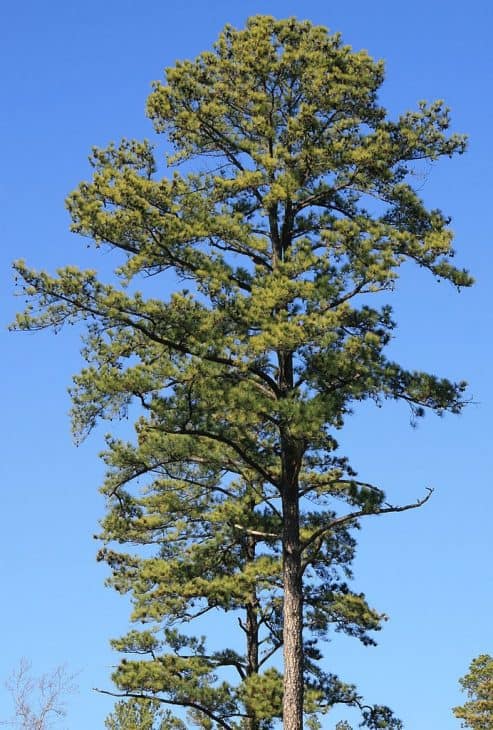
The Loblolly Pine is one of the many pine tree species native to the Southeastern United States. You can find this species from East Texas all the way to Florida and in southern New Jersey in the north. Loblolly Pine trees can reach a height of 98 to 115 feet. They have evergreen needles for leaves that are around 6 to 9 inches long. They produce flowers in clusters on the tips of their branches.
5. Norway Spruce (picea abies)
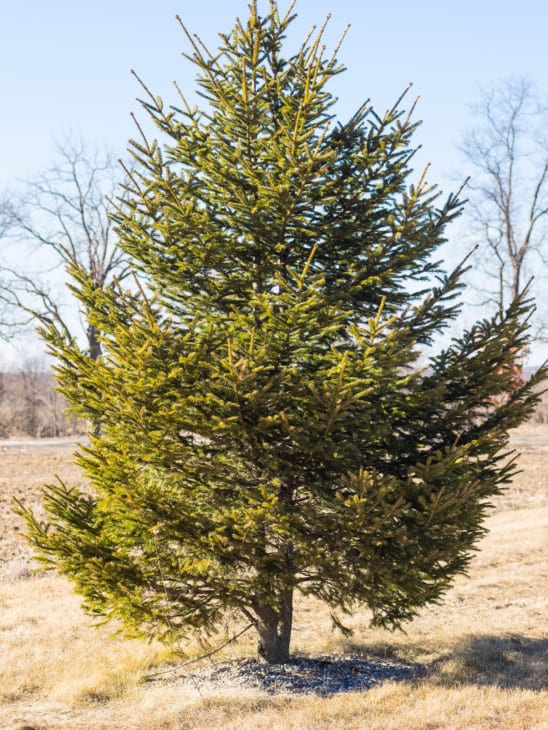
The Norway Spruce, sometimes called the European Spruce, is a fast-growing evergreen coniferous tree species belonging to Northern, Eastern, and Central Europe. It is known for its distinctive, downward-hanging branches and large, cylindrical cones around 9 to 17 cm long. The Norway Spruce can grow as tall as 130 feet and has glossy, dense, and stiff leaves.
6. Chestnut Oak (quercus prinus)
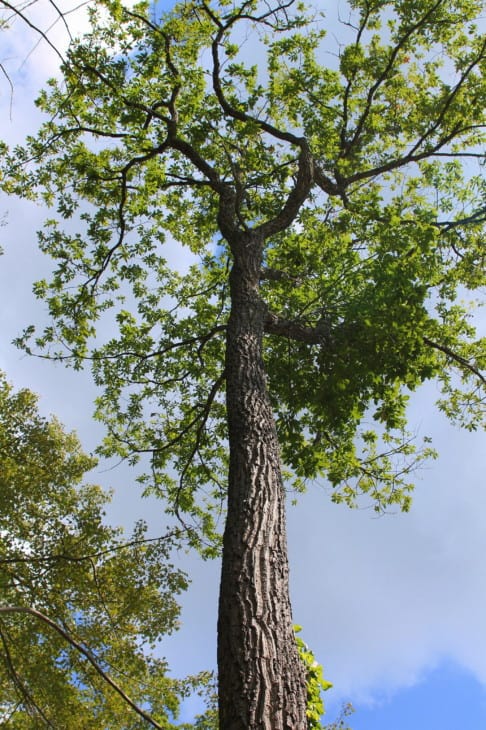
The Chestnut Oak is a popular deciduous oak species from the white oak group. It is native to the eastern United States and can be found all the way from southern Maine southwest to central Mississippi and southern Michigan. It grows between 60 and 70 feet in height and has glossy, green leaves that turn yellow-brown or red-brown before dropping in fall.
7. Pawpaw (asimina triloba)
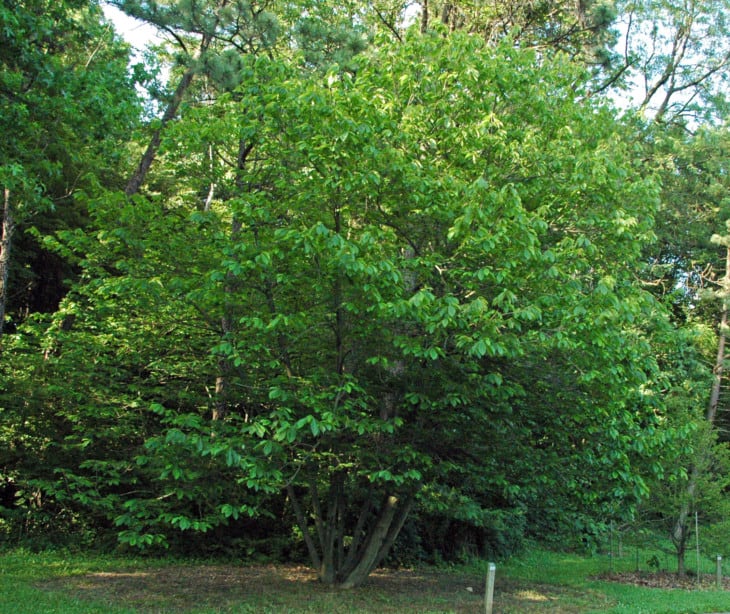
Pawpaw is a small deciduous tree indigenous to the eastern United States and Canada. It produces a large, yellowish-green to brown fruit with a bright flavor and tastes like a cross between mango and banana. In natural conditions, a Pawpaw tree can grow to a height of up to 25 feet. It has simple, oblong, green leaves that turn yellow during fall.
8. Quaking Aspen (populus tremuloides)
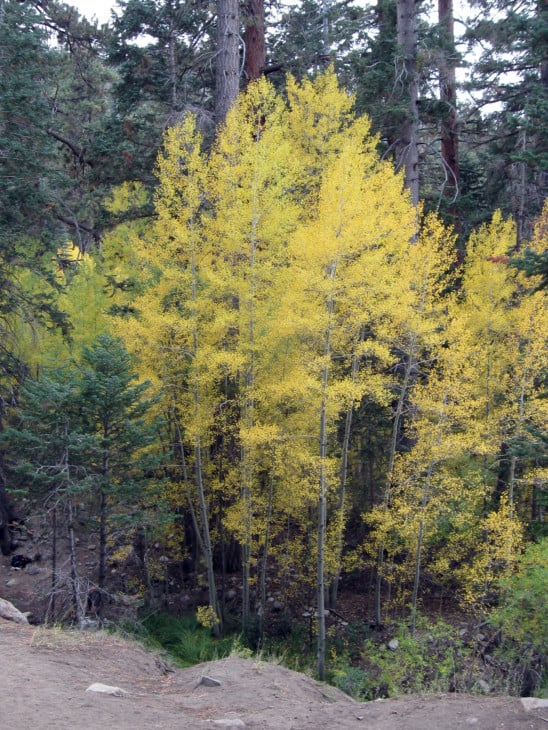
The Quaking Aspen is a deciduous tree native to cooler areas of North America, like Ohio. It is most noted for its deep green foliage and beautiful white bark. It grows to a height of 50 feet, at maximum. It is called the “Quaking” Aspen because it has flat, green leaves that tremble under the slightest breeze on their flattened leafstalks.
9. Sugar Maple (acer saccharum)
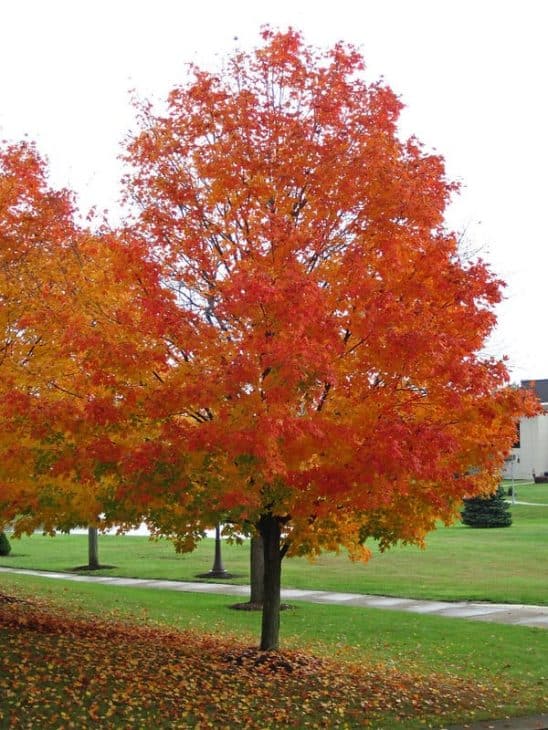
The Sugar Maple is a flowering, deciduous tree species indigenous to central and eastern North America. It is primarily found in cooler climates. It can grow to a height of 80 feet and can live for more than 200 years. The tree has dark green, lobed leaves with 3 to 5 lobes on each leaf. These leaves turn into stunning shades of yellow, orange, red, and brown during fall.
10. American Sycamore (platanus occidentalis)
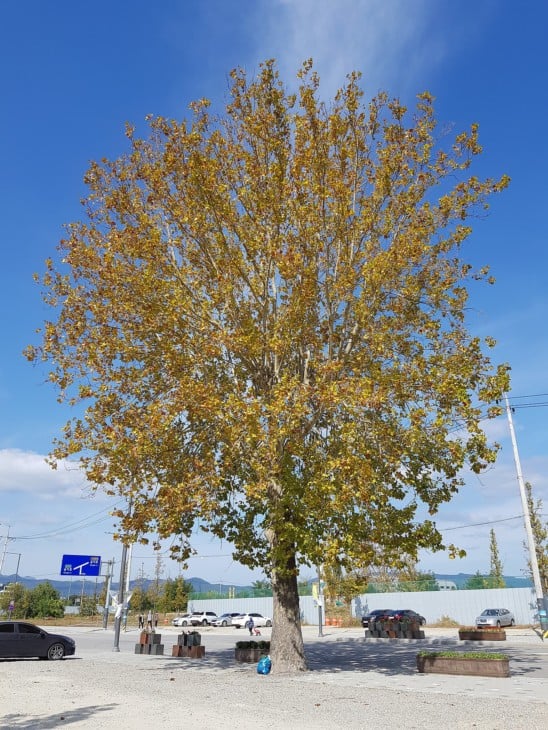
The American Sycamore is a tree species native to the eastern and central United States, the mountains of northeastern Mexico and Canada. It is a wide-canopied, deciduous tree that can grow to a height of 75 to 100 feet. It has a massive trunk with an open crown of large and crooked branches. The tree has large, lobed leaves with saw-like edges and fuzzy undersides.
11. Northern Red Oak (quercus rubra)
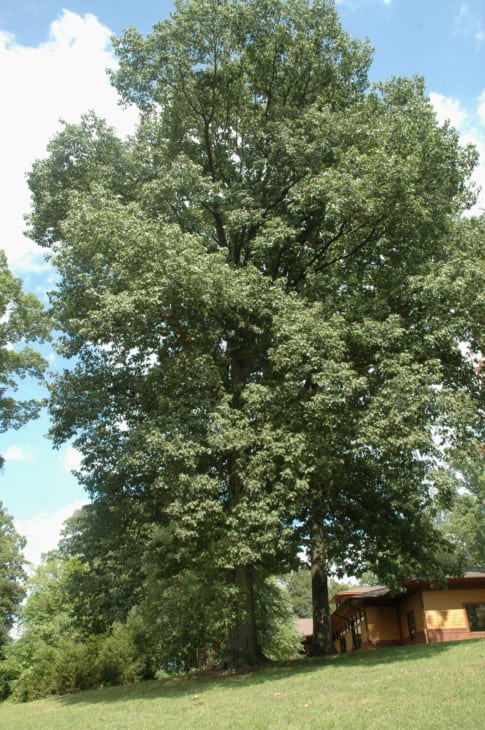
The Northern Red Oak is a deciduous oak tree species native to North America. It is found in abundance in the eastern and central United States and southeast and south-central Canada. It is a fast-growing species that can grow to a height of 16 to 20 feet. It has simple and alternate, hairless leaves that sit on yellowish stalks.
12. Cucumber Magnolia (magnolia acuminata)
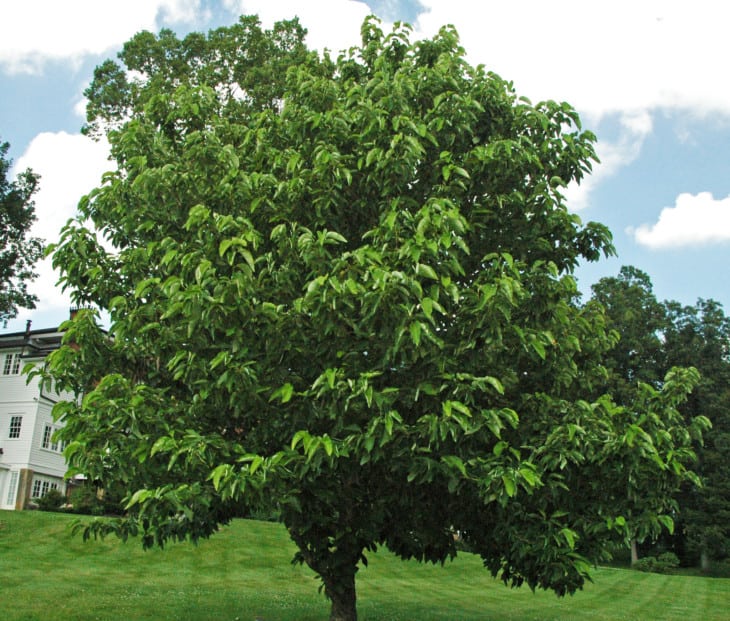
The Cucumber Magnolia is one of the largest and the hardiest magnolia tree species. It is a round-topped forest tree native to the Eastern United States and Southern Ontario in Canada. You can find it in the foothills of the Appalachian Mountains. The Cucumber Magnolia can grow to a height of 60 to 75 feet and produces cucumber-shaped fruit that turns dark red when it matures.
13. Common Hackberry (celtis occidentalis)
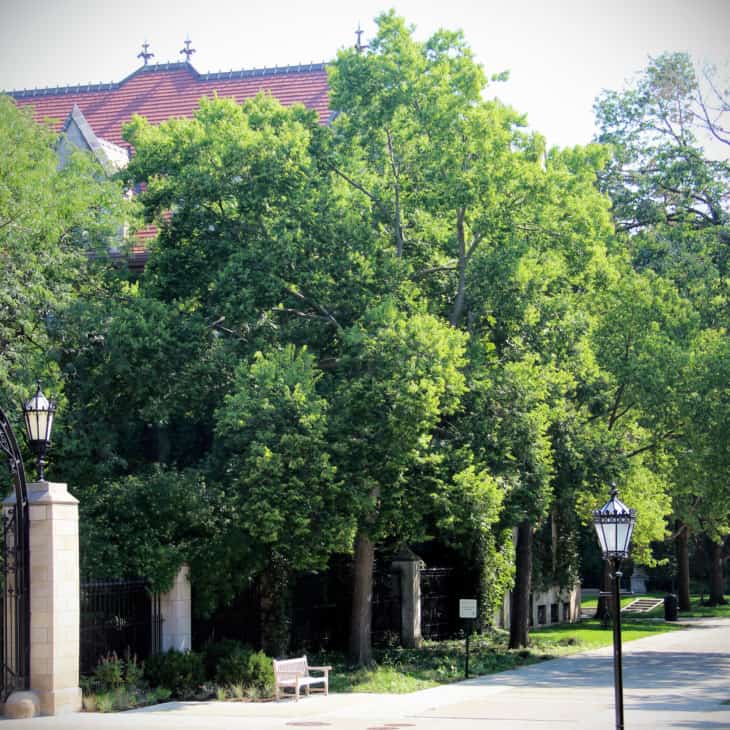
The Common Hackberry, also known as the Nettletree, is a large, deciduous tree species native to North America. You can commonly find it on river terraces and floodplains in southern and central Minnesota. Known for its toughness, the Common Hackberry can grow 30 to 50 feet tall. It has a slender trunk and glossy-green ovate leaves with rounded bases.
14. Northern Catalpa (catalpa speciosa)
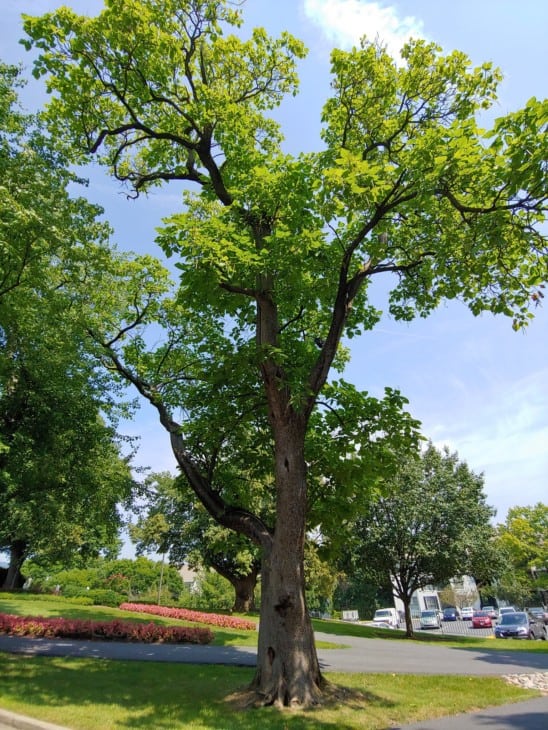
The Northern Catalpa is a widespread, fast-growing tree species native to the Midwestern United States. It is known as the “showy” tree because it has white flowers, dangling bean-like seed pods, and giant, heart-shaped leaves that measure up to 12 inches in length. The Northern Catalpa typically reaches 40 to 70 feet and has a flaky, gray-colored bark.
15. Green Ash (fraxinus pennsylvanica)
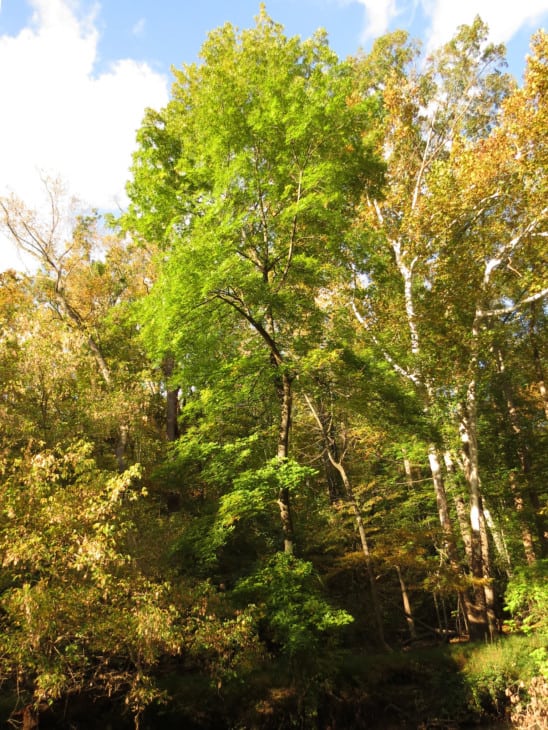
The Green Ash is a deciduous ash tree species native to eastern and central North America. You can find it in abundance throughout east Colorado, Florida, Oklahoma, and East Texas. It is one of the most widely distributed trees in the States. It can grow up to 82 feet tall and has pointed, opposite, pinnately compound leaves.
16. Atlantic White Cedar (chamaecyparis thyoides)
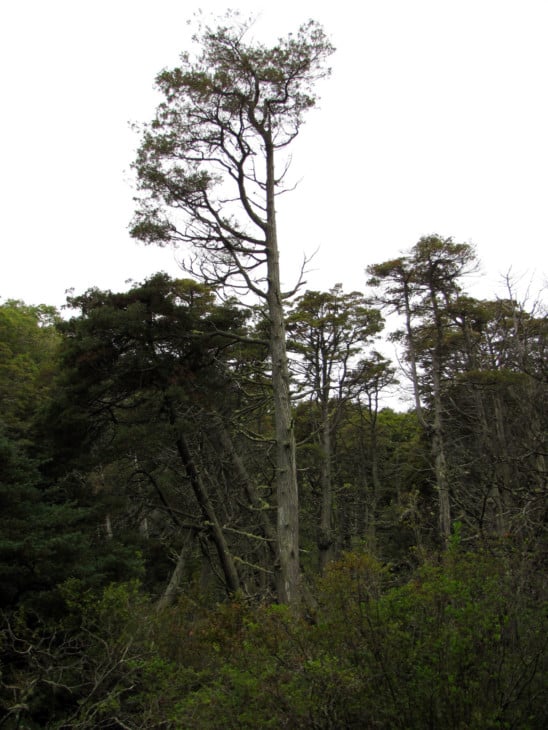
The Atlantic White Cedar is a popular tree species native to the Atlantic coast of North America. It is found from southern Maine to Georgia and along the Gulf of Mexico coast. It is a tall, evergreen tree and has scaly, fan-shaped foliage. It grows to 60 to 80 feet and has greenish-blue sprays of scaly and flattened leaves.
17. Common Persimmon (diospyros virginiana)
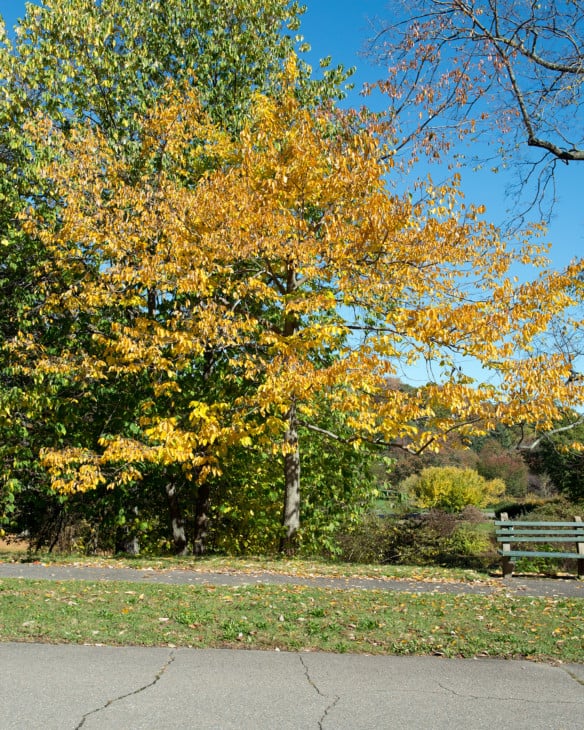
The Common Persimmon is a deciduous tree from the ebony family. It can be found in southern Connecticut, Florida, Texas, Louisiana, Oklahoma, Kansas, and Iowa. The tree is known for its distinctive thick, dark gray-black scaly bark and sweet, orange fruit that it produces during fall. When ripe, the fruit tastes like dates. The 2 to 6-inch long leaves of the Common Persimmon tree are broadly oblong and pointed with smooth edges.
18. September Elm (ulmus serotina)
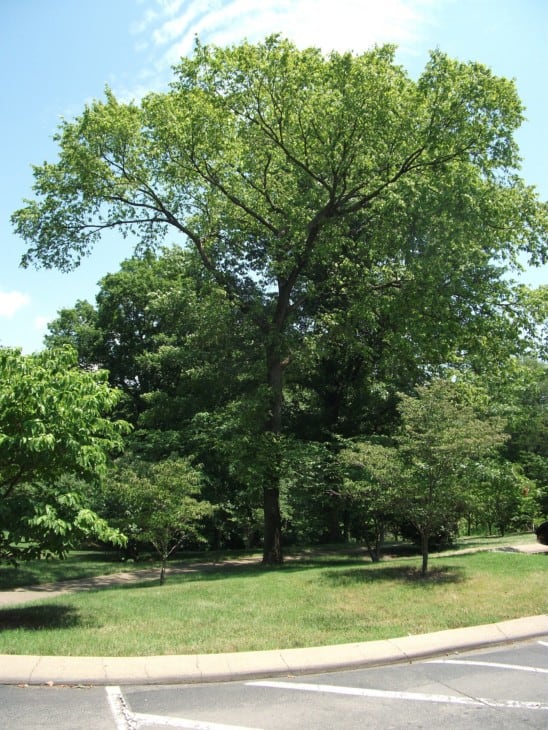
The September Elm is a popular fall-flowering North American tree species found throughout Tennessee. Though uncommon outside Tennessee, you can also find it in some areas of Illinois, Kentucky, Arkansas, Mississippi, Oklahoma, Alabama, and Georgia. The tree can grow to a height of 94 feet and has a gray to reddish-brown bark with flat, narrow, and scaly ridges. The leaves of the September Elm are double-toothed.
19. Downy Hawthorn (crataegus mollis)
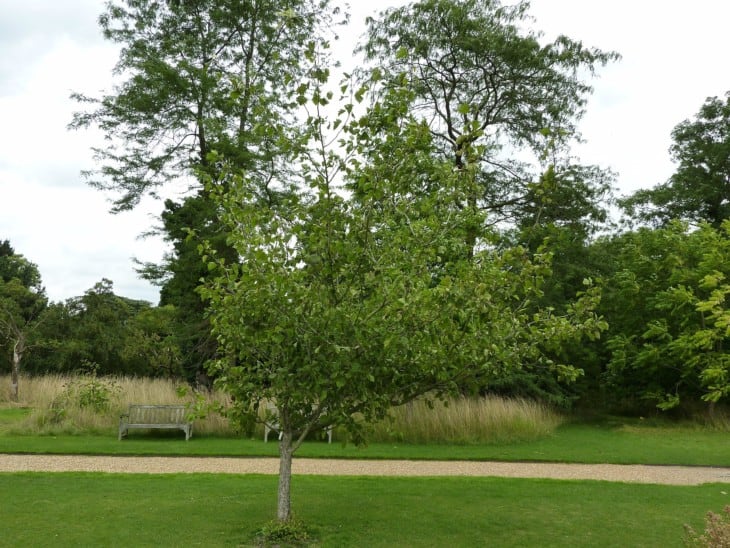
Originally known as the “White Thorn,” the Downy Hawthorn is a deciduous tree species mainly found in eastern North America. It can grow up to 40 feet tall and is easily distinguishable by its tall trunk and compact, rounded crown of spreading branches. It has large, broad, and hairy leaves with beautiful white flowers.
20. Shining Willow (salix lucida)
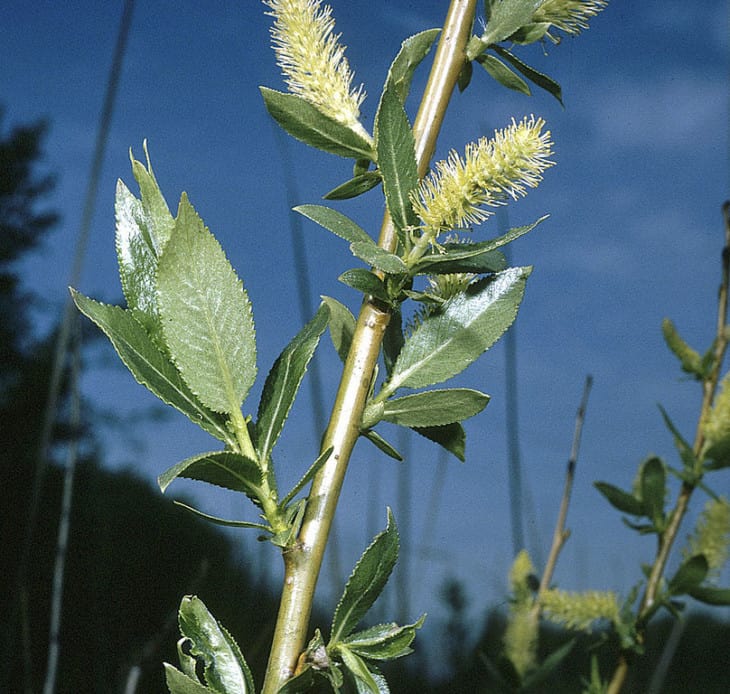
The Shining Willow is a large deciduous shrub or small tree native to northern and western North America. It usually occurs in wetland habitats and is shaped like a pyramid. It grows to a height of 13 to 36 feet and has a short trunk. The shoots of a Shining Willow are greenish-brown to grey-brown. It has toothed leaves that have an average length of 5.5 inches.
21. Birch (betula)
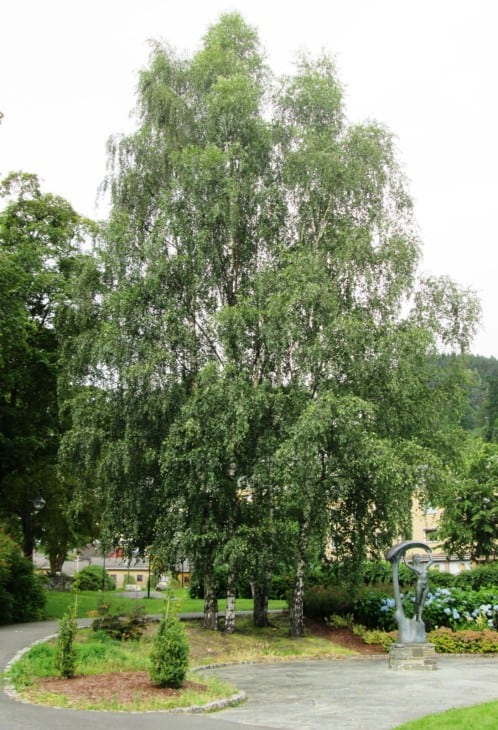
The Birch is a thin-leaved deciduous hardwood tree native to Europe and Asia. It is highly favored for its light, airy foliage, slender trunk, and beautifully colored, peeling bark. You can easily recognize a Birch tree by its open crown and drooping branches. It can grow to a height between 49 and 82 feet. It has triangular or egg-shaped leaves with rounded bases and pointed tips.
22. Hazel Alder (alnus serrulata)
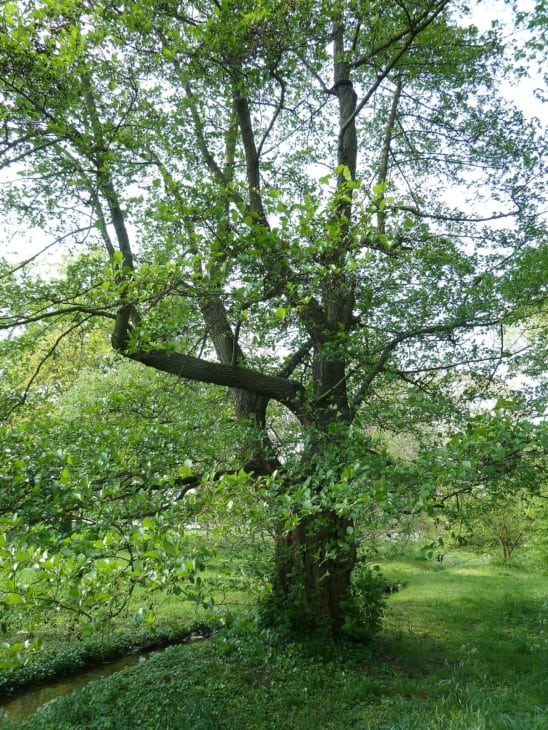
The Hazel Alder is a dense, fast-growing deciduous shrub species native to eastern North America. You can find it in abundance in Florida and Texas. It has a smooth, thin, gray-brown bark and can grow to a height between 10 and 20 feet. It has heart-shaped and rounded leaves with soft and hairy undersides that make it easy to distinguish.
23. Alder (alnus)
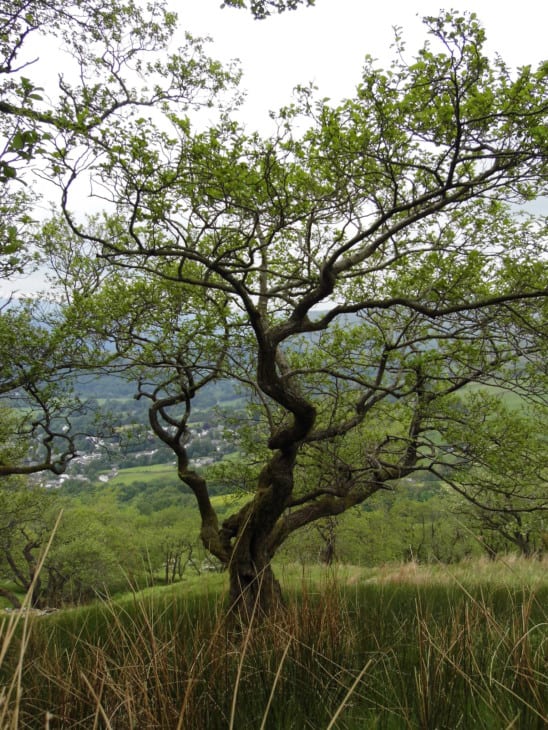
The Alder is a fast-growing shrub or tree belonging to the genus Alnus. It grows well along rivers and on wetlands. In fact, it thrives in any place where the ground usually stays damp. It is deciduous in nature and can grow up to be 70 to 120 feet tall. The Alder has toothed leaves and catkins, which become woody and serve several medicinal purposes.
24. Walnut Tree (juglans)
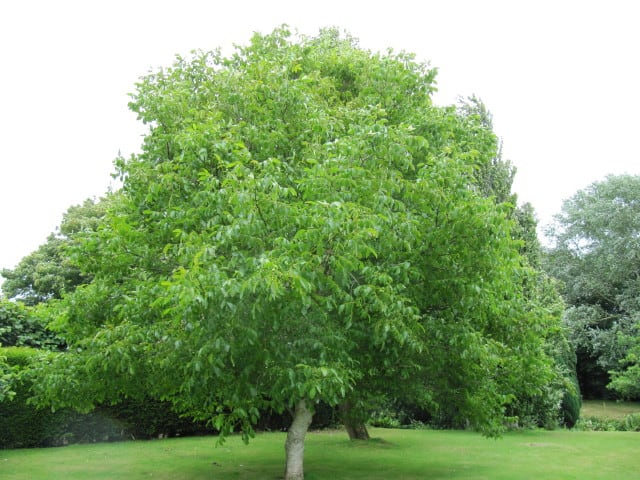
Walnut Trees are species of deciduous plants and trees belonging to the Juglandaceae family. They are native to North and South America, southern Europe, and Asia. Its average height is between 100 to 200 feet. Walnut Trees have pinnate leaves and one big leaf at the end of the twig. The foliage turns brown or yellow during fall. The seeds from this tree are known as walnuts, a very popular type of edible nut.
25. Ohio Buckeye (aesculus glabra)
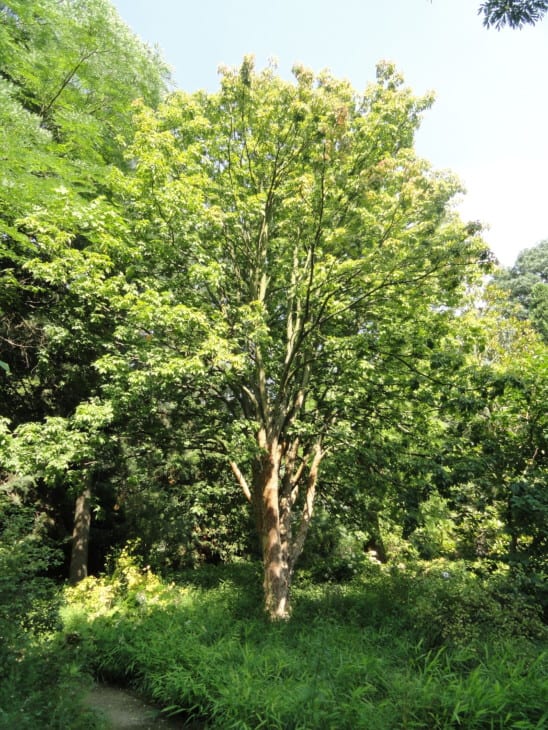
Ohio Buckeye is a tree species native to North America. It is found naturally in the Midwestern region and lower Great Plains in the United States. It is a medium-sized tree that has a good drought tolerance and is indifferent to soil conditions. It can grow to an average height of about 70 feet and palmately compounded, light green leaves.
26. Crabapple Trees (malus)
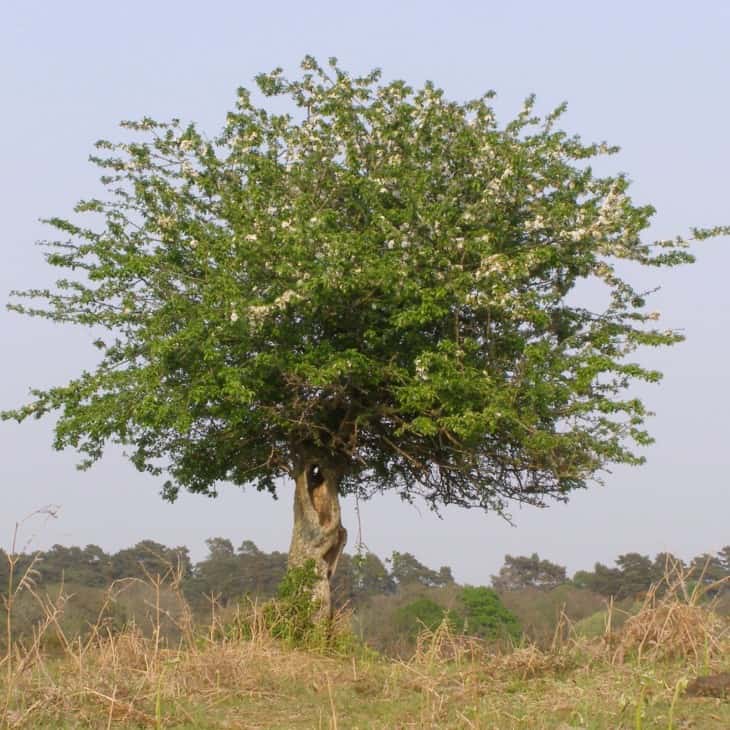
Crabapple Trees are small, ornamental trees of the genus Malus. They are indigenous to North America and Asia. They are widely grown around Ohio because of their attractive growth habit and stunning spring flower display. Most Crabapple trees grow 15 to 20 feet tall and produce colorful fruits during fall. They have green to dark green leaves with hints of red and purple.
27. Eastern Redbud (cercis canadensis)
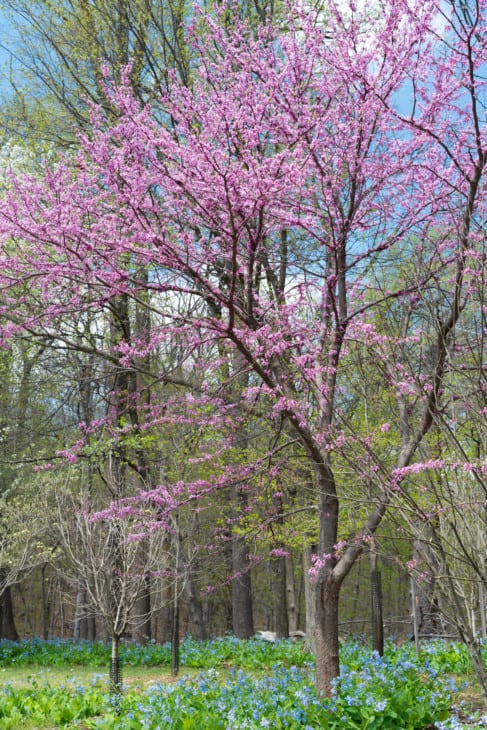
The Eastern Redbud is a small tree or a large deciduous shrub indigenous to eastern North America. You can find it in southern Michigan to central Mexico and east to New Jersey. It is relatively easy to grow and is particularly suited to well-drained soils. It can grow to a height between 20 and 30 feet and has alternate, simple, broad-shaped leaves.

